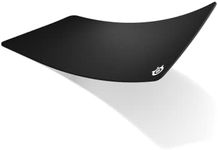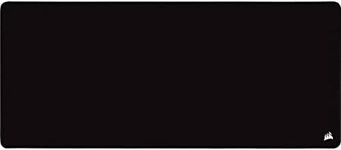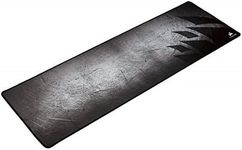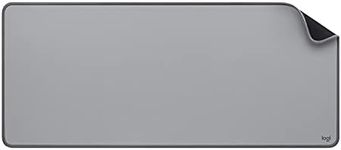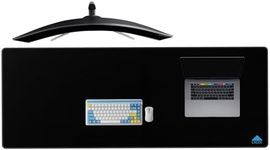Buying Guide for the Best Desk Mats
Choosing the right desk mat can significantly enhance your workspace, providing comfort, protection, and an aesthetic boost. When selecting a desk mat, it's important to consider various factors that will ensure it meets your specific needs and preferences. Here are some key specifications to consider and how to navigate them to find the best fit for you.SizeThe size of a desk mat is crucial as it determines how much of your desk surface it will cover. Desk mats come in various sizes, from small ones that fit just under your keyboard and mouse to large ones that cover the entire desk. If you have a compact workspace or only need a mat for your keyboard and mouse, a smaller size will suffice. For those who want to protect a larger area or have multiple items on their desk, a larger mat is ideal. Consider the dimensions of your desk and what you plan to place on the mat to choose the right size.
MaterialDesk mats are made from a variety of materials, each offering different benefits. Common materials include leather, fabric, rubber, and plastic. Leather mats provide a premium look and feel, are durable, and easy to clean. Fabric mats offer a soft surface and are often more affordable, but they may require more maintenance. Rubber mats provide excellent grip and are water-resistant, making them ideal for spill-prone areas. Plastic mats are durable and easy to clean but may not offer the same aesthetic appeal. Choose a material based on your preference for look, feel, and maintenance.
ThicknessThe thickness of a desk mat affects its comfort and durability. Thicker mats provide more cushioning, which can be beneficial if you spend long hours at your desk, as they offer better wrist support. However, they may also take up more space and be less flexible. Thinner mats are more discreet and easier to roll up and store but may not offer the same level of comfort. Consider how much cushioning you need and how much space you have on your desk when choosing the thickness.
Surface TextureThe surface texture of a desk mat can impact its usability, especially if you use a mouse on it. Smooth surfaces allow for easy mouse movement and are ideal for tasks that require precision, such as graphic design or gaming. Textured surfaces provide more grip, which can be useful for writing or preventing items from sliding around. Think about how you use your desk and what activities you perform most frequently to determine the best surface texture for your needs.
Edge DesignThe edge design of a desk mat can affect its durability and comfort. Some mats have stitched edges, which prevent fraying and increase longevity. Others have smooth, heat-sealed edges that provide a sleek look but may wear out faster. Beveled edges can offer additional comfort by reducing pressure on your wrists. Consider how much wear and tear your mat will endure and whether you prioritize durability or aesthetics when choosing the edge design.
Non-Slip BaseA non-slip base is important to keep the desk mat in place during use. Mats with a rubber or silicone base provide excellent grip and prevent the mat from sliding around, which is especially useful if you move your mouse or type vigorously. If you want a stable and secure mat, look for one with a non-slip base. This feature is particularly important for those who perform tasks that require precision and stability.
Aesthetic and DesignThe aesthetic and design of a desk mat can enhance the overall look of your workspace. Desk mats come in various colors, patterns, and styles, from minimalist and professional to vibrant and artistic. Choose a design that complements your desk setup and personal style. If you want a cohesive look, consider matching the mat with other desk accessories. Your workspace should be a reflection of your personality, so pick a design that makes you feel comfortable and inspired.



